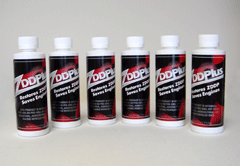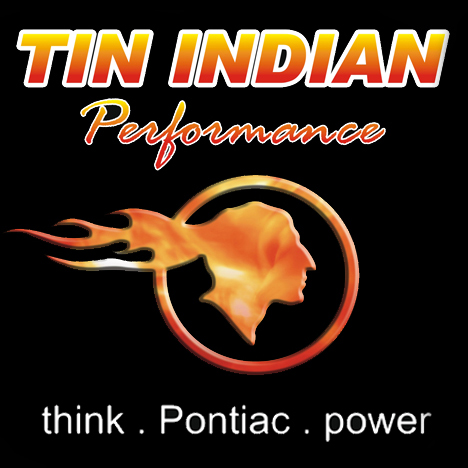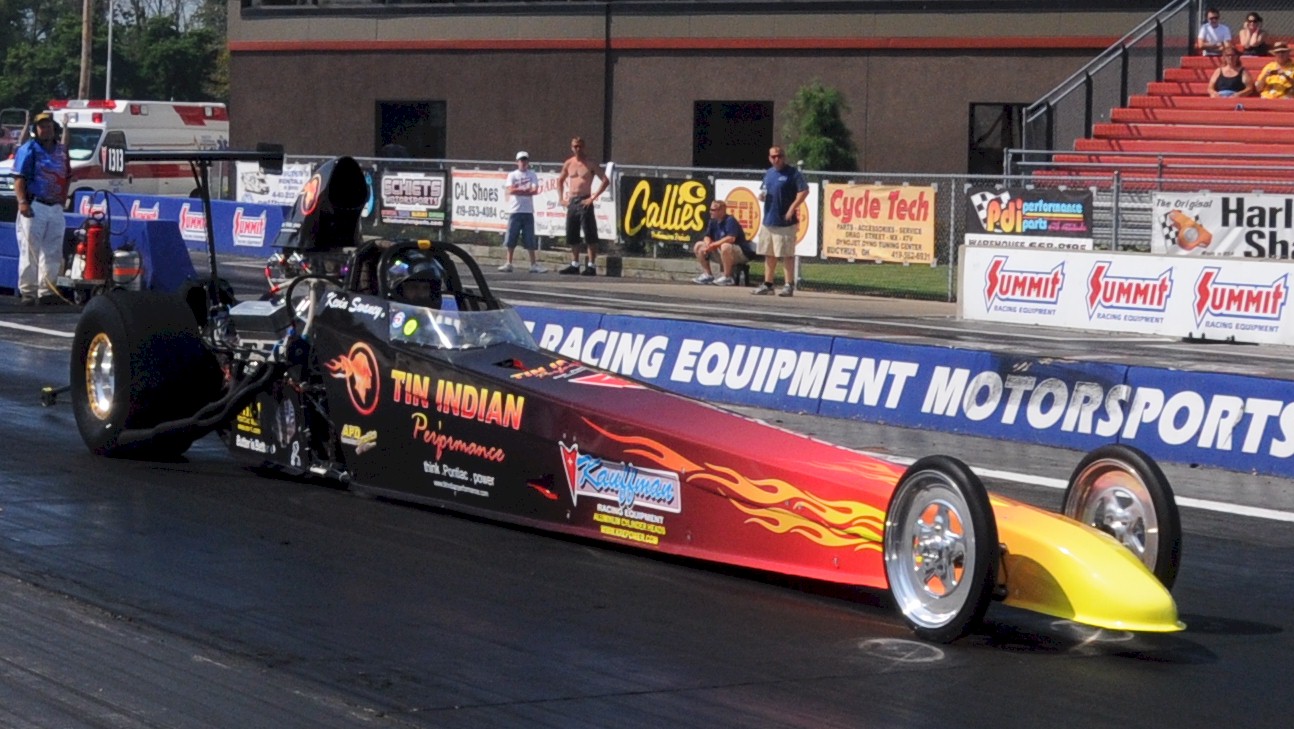"If you're currently putting mileage on your classic vehicle and using the latest API grade SM oil, you are almost certainly doing irreversible damage to your engine."
After 70+ years of trouble-free, metal-to-metal engine protection, the E.P.A. is forcing ZDDP (Zinc Dialkyl-Dithio-Phosphate = Zinc and Phoshorus) from domestic motor oil. If your engine was designed prior to the 1990s, the non-roller lifters require ZDDP in the motor oil to avoid premature deterioration. Don’t let the lifters run metal-to-metal. Keep ZDDP, via ZDDPlus ™, in your motor oil. Add the 4 fluid ounce contents of a bottle of ZDDPlus™ at every 4- to 5-quart oil change. It’s the perfect solution for owners of classic and high-performance vehicles.
| ZDDPlus ™ PRICING |
 |
| ZDDP-7176 |
| 4 oz bottle of ZDDPlus (treats 5 quarts of oil) |
IMPORTANT NEWS on ZDDPlus ™
It's a well-known fact among engine re-builders and auto mechanics that older engines, especially the flat tappet performance engines manufactured before 1988, require an oil additive known as ZDDP (Zinc Dialkyl-Dithio-Phosphate). This additive has been the most effective extreme pressure additive found in quality motor oils for almost 70 years.
ZDDP is a surface modifier that alters bearing and journal surface characteristics to prevent metal-to-metal contact. Under conditions of increased heat and pressure, the ZDDP molecule quickly plates over the contact surface with an extremely thin glass-like film and provides a sacrificial coating. As soon as the engine conditions get back to normal, the film dissipates back into the oil solution. This action prevents the lifter and cam from making contact and greatly reduces the tendency of parts to scuff and gall under heavy-loaded boundary lubrication situations.
Camshafts (flat tappet design) and lifters found in the high-performance engines definitely fit this category, due to high velocities and accelerations required to open and close valves many times per second. This condition is also found in the piston wrist pins of diesel and other engines. In other words, this description clearly fits the characteristics of the older engines (1988 and earlier).
Back before 1988, normal amounts of ZDDP could be found in our domestic oils. The API grade “SG” oils contained in excess of 0.12% ZDDP by weight. The API grade of oil prior to this was “SF” and had ZDDP concentrations in excess of 0.15%. For more than 20 years, it was possible to buy EOS from GM in a 16-ounce bottle. Although EOS contained a reasonable amount of the ZDDP molecule, the product was withdrawn from the market in the second quarter of 2007.
In recent years, the EPA required new car manufacturers to guarantee catalytic converters for over 100,000 miles. The use of the additive ZDDP would most likely void new car warranties. Newer cars with roller rocker assemblies do not need ZDDP in the motor oil for protection.
There are still some single-weight racing oils that contain various amounts of ZDDP, which would offer protection. However, because it is a single-weight oil, it is not the proper oil for many street-driven, high-performance cars. The actual percentage of ZDDP in these special racing oils may or may not be the proper concentration of 0.15% that was found back in 1988 oils under the SF category.
With ZDDPlus ™ one 4-ounce bottle poured into a typical 5-quart oil tank brings the ZDDP back to the SF designated level of 0.15% by weight. This matches the original motor oil ZDDP concentration available in 1988 (SF category).
ZDDPlus ™ works with any motor oil you’re currently using, including synthetics. It’s the best combination of ingredients for lubrication of extreme pressure points. This is critical in cars/trucks that have flat tappet cams.
Our bottles feature a child proof cap and proper warnings for its use. ZDDPlus ™ has a long shelf life, as long as it’s kept sealed and stored where temperatures do not exceed 120 degrees.
The need for this product is huge, since every older performance or classic car, regardless of make or model, needs ZDDP in its motor oil. ZDDPlus ™ is not to be used in any OBD II cars (1995 and newer) since it can prematurely erode the catalytic converters.
More information on this important subject can be researched on the internet. Simply type in “ZDDP” and any car model you desire. Or search on “Flat Cam.” Most car models have discussion boards and forums on this problem. While many contemporary problems are discussed, many topics are not suitable for the typical older classic cars or performance cars/trucks.
What about using diesel oils in classic cars? This is not a good alternative for several reasons. Diesel oils contain detergents required for soot and ash control and actually reduce the effectiveness of the added levels of ZDDP. Diesels also have higher bearing clearances, which require higher viscosity oils. As new diesel oil categories get introduced, the amount of ZDDP concentration in the oil will diminish.
The perfect solution to the lack of ZDDP in the current “SM” rated oils is the new product, ZDDPlus ™. Our handy 4-ounce bottle has the proper concentration of ZDDP to bring any SM oil category back to SF specifications.
We have conducted analytical tests on almost every well-known current additive and cam break-in lube and none match, or even come close, to the ZDDP content in ZDDPlus ™. Test reports are available for review.
The manufacturer of ZDDPlus ™ is an avid car enthusiast and discovered the urgent need for this product to save old car engines a few years ago. We realized that oil companies have been forced to remove ZDDP levels because today’s car manufacturers now have to warranty catalytic converters for over 100,000 miles. ZDDP actually shortens the life span of the catalytic converter, raising warranty issues. Also, since cars now have roller lifters, it eliminates the need for ZDDP. The vehicles that fall through the cracks are the older performance and classic cars and trucks. The ZDDPlus ™ bottle label clearly states, “Intended for use on PRE-OBD...vehicles only.”
We are a major distributor to promote and distribute ZDDPlus ™ to the wholesale and retail market. It is not often that a product comes along that crosses over to virtually every car/truck line and model.
Remember, it’s less than $10 per oil change to protect your engine. That’s an affordable cost to any owner of an old car.
GAS ENGINES OIL SPECS
| CATEGORY | STATUS | SPECIFICATIONS |
| SM | Current | For all current vehicle engines |
| SL | Current | For engines 2004 and older |
| SJ | Current |
For engines 2001 and older |
| SH | Discontinued | For engines 1996 and older |
| SG | Discontinued | For engines 1993 and older |
| SF | Discontinued | For engines 1988 and older |
| SE | Discontinued | Not acceptable for gasoline-powered vehicles engines made after 1979 |
| SD | Discontinued | Not acceptable for gasoline-powered vehicles engines made after 1971 |
But what about the claims of the various additives?
We make virtually no claims for ZDDPlus ™ EXCEPT that it restores the EP function of the oil to the level originally required for an older car. Other additives make claims so ludicrous, they cannot be accepted based on common sense alone. Consider, for example, fuel mileage – The ONLY proven fuel-mileage claim is that of the newer, lower viscosity API-rated ENERGY CONSERVING grades of oil, which claim 1.5% for the Type 1 EC, and 2.7% for the Type II EC oils. Note that this claim is in percent, not mpg. If an additive was to actually boost fuel mileage 20% or more, as some claim, then auto manufacturers would have found the very cheapest tool to increase their CAFÉ fuel ratings possible! If there were any truth at all to their claims, it is certain that virtually every car built would leave the assembly line with those products installed!
Can an oil or additive have Zn and not P and still contain ZDDP?
It’s important to note that the wear protection properties are due only to the characteristics of the ZDDP molecule and not to Zn or P in the oil in other forms or from other sources. This means that, if a particular motor oil mentions the addition of Zn alone or P alone, the ZDDP molecule is not present in that motor oil. The ratios of Zn and P can be manipulated by simply adding Zinc salts or phosphates, but again, this does not produce ZDDP and has no anti-wearing action.
Last, depleted ZDDP releases Zn and P into the motor oil and testing for levels of the pure elements is not a gauge of the status of the ZDDP level. What does this mean? If you see an oil additive or a motor oil listing only a level of Zn without a level of P, then there is no ZDDP in that product.
ZDDPlus ™ QUESTIONS & ANSWERS
What is ZDDPlus ™?
ZDDPlus™ is an oil supplement that contains very high concentrations of the well-known additive ZDDP (Zinc Dialkyl-Dithio-Phosphate), which has been the primary EP (Extreme Pressure) ingredient in all quality motor oils for over 70 years.
Why do I need ZDDP ?
The EPA has put stricter emission requirements on new cars, which have influenced manufacturers to remove ZDDP from motor oils. If you have an older car that was specified to use SF or earlier motor oil, its design requires ZDDP. Your car could be damaged with the use of modern SM oils.
What do the oil grades such as “SF” indicate?
In the API (American Petroleum Institute) Classification System, “S” and “C” are the two basic application categories of oil. “S” is intended for gasoline use and “C” is intended for diesel use. “A” was the first grade in each category and resulted in “SA” and “CA” grade oils. Each progressed farther up the alphabet as new grades of oil were introduced. The newest grades are “SM” and “CJ” respectively.
Aren’t the newer oils better than the older oils?
Historically, every new grade of oil introduced since the 1930s was better than the previous grade and could be considered “improved” with one exception. The original SA grade was straight mineral oil (non-detergent and without additives) and SB contained additives, which could not be used in the earliest cars specified for SA. While it is true that SM oils are better for newer cars, they are not better for older cars. Simply put, the newer and/or better oils are not backward compatible for older cars, primarily due to the gradual reduction of ZDDP starting with SG grade in 1988.
How much ZDDPlus ™ should I add to my oil?
One bottle of ZDDPlus ™ will raise the ZDDP level of SL or SM spec oil to the standards that were in place when SF (or earlier) oil was specified.
What if my oil already contains some ZDDP ?
ZDDP is most effective if the concentration is between 0.18 % and 0.2 % by weight. Tests have shown that concentrations above this amount, up to as much as several percent have no effect except to prolong additive life.
Can I use ZDDPlus ™ with regular and synthetic oils?
ZDDPlus ™ should be compatible with all conventional and synthetic oils intended for automotive use. Virtually all of these oils have contained higher amounts of ZDDP for years and only recently have the levels been decreased.
What is the shelf life of ZDDPlus ™?
The shelf life of ZDDPlus ™ is essentially the same as regular motor oil (many years) as long as a few conditions are met. The temperature should be kept below 120 degrees F and above 0 degrees. Until it is mixed with motor oil, ZDDPlus ™ has a tendency to absorb moisture, not unlike brake fluid. Absorption of water will degrade its performance; however, the ZDDP can be restored by slowly heating to a temperature slightly above 100C.
When should ZDDPlus ™ be added ?
ZDDPlus ™ can be added anytime, but the best time is whenever the oil is changed. A single 4 oz bottle ZDDPlus ™ provides the proper concentration for a 4- to 5-quart oil change.
How long does ZDDPlus ™ last?
Minute amounts of the ZDDP molecule in the ZDDPlus ™ form a necessary sacrificial additive which becomes depleted upon use. ZDDPlus ™ is designed to last the life of a normal oil change for your vehicle; however, attention should be given to the categories of service known as “normal” and “severe.” The severe category includes stop-and-go driving and short trips, and results in shortened service life. Not only is the service life of ZDDPlus ™ decreased, many other oil additives suffer as well.
Why should ZDDPlus ™ not be used on OBD cars?
The key ingredient of ZDDPlus ™ is ZDDP, which has been known to shorten catalytic converter life. Manufacturers have been redesigning engines for the last decade to minimize the need for ZDDP in order to lower emission levels.
Why not just use diesel rated oils since they contain higher levels of ZDDP ?
Diesel engine requirements are much different than those of gasoline engines. The higher speeds and lower bearing surface-to-power ratios of gasoline engines require oil with higher shear ratings than most diesel oils. Diesels also have higher bearing clearances, which call for higher viscosity oils. The additional detergents required for soot control actually reduce the effectiveness of added levels of ZDDP found in diesel oils.
How does ZDDPlus ™ compare to EOS?
Historically, EOS was the most concentrated ZDDP supplement available. It was intended to boost ZDDP levels of oils that already contained EP additives. ZDDPlus ™ is packaged in a 4 oz bottle and contains twice the amount of ZDDP than there is in a 16 oz bottle of EOS. Therefore, it takes two 16 oz bottles of EOS to equal the same concentration of ZDDP in one 4 oz bottle of ZDDPlus ™. ZDDPlus ™ is intended to be used with newer oils with little or no ZDDP. EOS was discontinued by General Motors in the second quarter of 2007.
What about the claims of the various additives?
We make virtually no claims for ZDDPlus ™ except it restores the EP function of the oil to the level originally required for your older car. Other additives make claims so ludicrous; they cannot be accepted based on common sense alone. Consider, for example, fuel mileage. The only proven fuel mileage claim is that of the newer lower viscosity API rated energy conserving grades of oil which claim 1.5% for the Type 1 EC, and 2.7% for the Type II EC oils. Note - This claim is in percent, not mpg. If an additive was to actually boost fuel mileage 20% or more, then auto manufacturers would have found the very cheapest method possible to increase their CAFÉ fuel ratings! If there was any truth to these claims, virtually every car built would certainly leave the assembly line with those products installed!
Can an oil or additive have Zn and not P and still contain ZDDP ?
It is important to note that the wear protection properties are due only to the characteristics of the ZDDP molecule and not to Zn or P in the oil in other forms or from other sources. This means that if a particular motor oil mentions the addition of Zn alone, or P alone, the ZDDP molecule is not present in that motor oil. The ratios of Zn and P can be manipulated by simply adding zinc salts or phosphates, but again, this does not produce ZDDP and has no anti-wearing action.
Lastly, depleted ZDDP releases Zn and P into the motor oil and testing for levels of either of these pure elements is not a gauge of the status of the ZDDP level. What does this mean? If you see an oil additive or motor oil specifying only a level of Zn without a level of P, then there is no ZDDP in that product.









